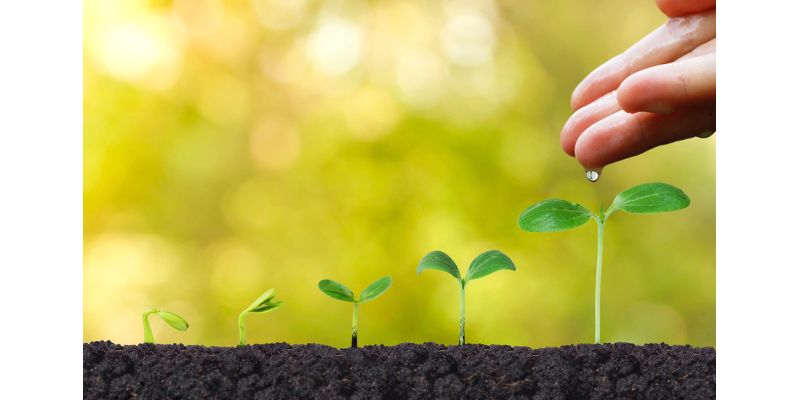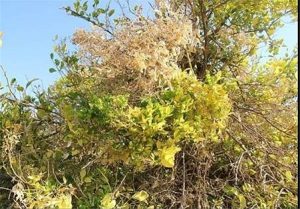Radko Tichavsky is a Czech born Mexican Agrohomeopath. He is a co-founder and director of Instituto Comenius in Mexico and author of Handbook of Agrohomeopathy, 2007 (Spanish) and Homeopathy for Plants, 2009 (Spanish) and creator and teacher of Holohomeopathy.
Agrohomeopathy Course!
Radko Tichavskyi is now offering a one semester virtual course in Agrohomeopathy (in English). You can learn how to define and analyze holons and how to repertorize the specific homeopathic treatment beyond just disease or pest names. You can find out more here: www.icomenius.edu.mx
A Materia Medica and Repertory for Plants: Mark Moodie hosts the website “Considera”, which provides a growing M.M and Repertory for plants and discusses resources for biodynamics and Agrohomeopathy .The website allows the world community to contribute their experiences in planting.
Radko Tichavsky’s next courses in Agrohomeopathy will be in Sicily, and will be presented in Italian and Spanish. See the flyer below for information.
Dear Radko
I write from Sicily, near Agrigento. I am a flower grower and I hope you can help me to find an answer. I cultivate chrysanthemums (Chrysanthemum spp.) in the field. The soil is medium-sized, clayish and very compact. These flowers are attacked by a small insect named Taeniothrips meridionalis and Thrips Major.
There are two small insects that eat the petals of the flowers damaging them. Can I use some holistic method?
Thank you
Faraci Vito – Agrigento (Sicily)
Radko Tichavsky:
Hello Vito. For the control of thrips in Chrysanthemum sp. culture it is very important to increase the distance between the plants. Crops with too much proximity between plants increase the possibility of thrips attacks.
The second important condition that attracts the presence of insects in Chrysanthemum sp. is the excess of nitrogen, which produces soft tissues in the plants, and makes them susceptible to attack by insects. Apply Calcarea carbonica 6 CH sprayed repeatedly (once a week) for a month which will harden the tissues of the plant. You can also intersperse among the Chrysanthemum´s Rosmarinus officinalis (has 129 common metabolites with Chrysanthemum sp.) and Ocimum basilicum (86 common metabolites). These are allied plants, whose secondary metabolites will help defend the plants against different types of thrips.
In case of intense infestation of the thrips, apply Ricinus communis 6 CH (made from immature fruits) with a little extra virgin olive oil as an adjuvant and Apium graveolens 6 CH. These two remedies are sprayed after the sundown. I invite you to participate in my next course in Sicilia, to be held from November 24-26 in Palermo and from December 1-3, 2017 in Catania. One of them is probably close to where you live. There you can learn to prepare homeopathic remedies practically and also meet producers who who currently use homeopathy on their crops.
Dear Mr. Tichavsky,
My lime trees are dying of a disease called Candidatus Phytoplasma Aurantifolia or Witches Broom Disease. I live in Southern Iran, in Minab City Hormozgan State. Can you suggest any treatment to cure it or prevent it in the future?
Thank you
Fereshteh Ghasemi
Radko Tichavsky:
Dear Feresteh,
The Candidatus phytoplasma aurantiifolia could be transmitted by humans moving infected plants. The first condition to eradicate the disease is to certify the innocuousness of the plants that you acquire for your property. But the disease could also be transmitted by the insects. Hishimonas phycitis is a well known vector of this phytoplasma. In addition to avoiding re-infection it is important to maintain the defenses of the plants in the form of secondary metabolites through good nutrition and apply homeopathic remedies with a high degree of similarity with Citrus aurantifolia (lime) and high content of coumarins such as Daucus carota 6 CH (made from the roots), Vanila planifolia 6 CH (made from fruits) and Thymus vulgaris 12 CH (made from essential oil). To diminish the presence of the transmitting insect, Apium graveolens 6 CH or Anethum graveolens CH have be applied with Opuntia ficus indica slime as adjuvant.
Dear Radko,
You gave me some very helpful information that I would like to put in to practice.
I was wondering how much of each of the following I would need to use. I am just trying to work out dilutions etc. I have a 7.25 hectare vineyard with approximately 15,500 vines. I have a 2000 litre spray unit. Your suggestion was: The remedies for this specific symptomatology of Phlyctinus callosus are as follows:
Quercus bark inoculum (of the Quercus species present in each holon) Ginkgo biloba 12 CH sprayed on soil and plants, alternating with Juniperus communis 12 CH ,with adjuvant dependent on temperature: at low temperatures vegetable oil and at hot temperatures gel of Aloe vera or sap of Opuntia ficus-indica.
Many thanks
Tyke Wheatley –
Radko Tichavsky:
Dear Tyke,
I’m glad you take holohomeopathic actions in your vineyard. Normally we use around 500: l of homeopathic remedy per hectare, the amount also depends on how fine the drop is formed (the thinner is better, and the less remedy is used). To produce 2000 liters of homeopathic remedy at 12 CH potency you will require 20 liters of 11 CH, and for this you will need 200 ml of 10 CH and to make this you will need 2 ml of 9 CH. Each step of dilution must be accompanied by 100 succussions. Starting at 20 liters, the 100 succutions are replaced with 100 laps made with a wooden pole for one side and 100 laps for the other side. Add to the 2000 liters container, approx. 10 liters of Opuntia ficus indica sap, of Aloe vera sap or olive extra virgin vegetable oil, according to the weather conditions are added and turns are made with wooden sticks.
Dear Plant Doctor,
I am a practising homeopath for many years but am unable to prescribe for plants. The current issue is with my plants grown in pots in my balcony which gets good morning sun. The leaves of one big plant show tiny black spot like insects at the back side. And since then all leaves of the same plant or surrounding ones get burnt. The soil of another plant (Indian basil) shows tiny white ant like insects crawling too. I used carcinosin 30 spray for 1 week followed by ustilago 30 spray. After 8 days the burning has reduced by more than 70 %. But black spotty insects are still present.
Regards,
Dr Kruti Bhuskute
Vadodara – Consultant Homeopath
Dear Dr. Kruti, I appreciate very much your interest in applying homeopathy in plants. Increasingly more human homeopaths are interested in applying the Hahnemann system in plants. However, it is very important to consider that “human” homeopathy is applied on one specie (Homo sapiens) while holohomeopathy (formerly called agrohomeopathy) is applied on thousands of different species. On this point is found the difficulty of applying some principles of “human” homeopathy in plants automatically, by an anthropocentric approach.
We share with plants only about 50% of the DNA, so this approach results in some cases where the anthropocentrically selected homeopathic remedies really work (in approximately 50% of cases) and in others it works little or not at all, since they do not work like perfect simillimums or have only suppressing effect.
To determine the specific homeopathic remedies for each plant, we first analyze which are the plants with high metabolic similarity that do not belong to the same taxonomic family of the target plant (plant-patient). From this list we select repertorized remedies that have a predominant action (and similarity) on the symptomatology to solve the case. For this reason, for example, an aphid in an Ocimum tenuiflorum on the one hand and the taxonomically “same” aphid in Citrus limon must receive two different homeopathic remedies, simply because they live on different plants and contextualized in its body part of secondary metabolites of the hosting plant and consecquently make different relations with other organisms in the holon. There are agrohomeopathy books that make abstract recommendations (for example against aphids or other organisms), without knowing in what plants the symptom is presented. In my experience this amounts to a bit like shooting the shotgun with closed eyes with little probability of success or with much variability of results, and obviously, this this also can lead to the allopathic (suppressing) use of homeopathy in plants.
Thinking about the Ocimum tenuiflorum you mentioned and assuming that the description of the symptomatology corresponds to mites, suggests Sulphur 6 CH and Apium graveolens 6 CH (with 107 common metabolites with Ocimum t.) with 19 insecticide and 28 insectifuge secondary compounds . These two remedies are applied separately during the cool season with a little olive oil (with 30 common metabolites) or with sap of Aloe vera during the hot season (with 51 common metabolites) as coadyuvant. The remedy has to be sprayed after sunset on the back of the leaves.










dear sir.
would you please tell us who you chech composition of secondary metabolites
and find that for example that tomato and alluminum cepa have 15 same secondary metabolism.
Dear sir.
Would you please explain this sentence “has 129 common metabolites with Chrysanthemum sp.) ” and the way you find first and second metabolism of plant and the effect of that on your prescription.
Best